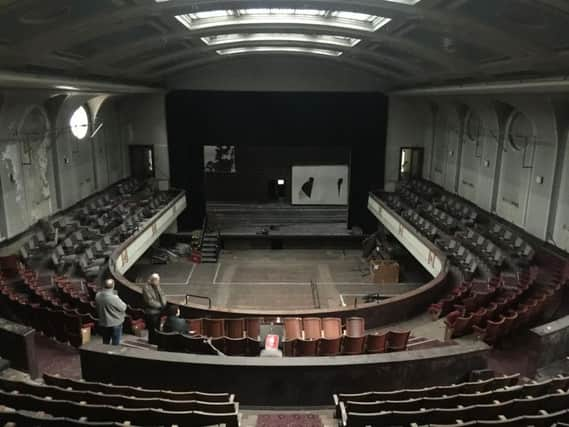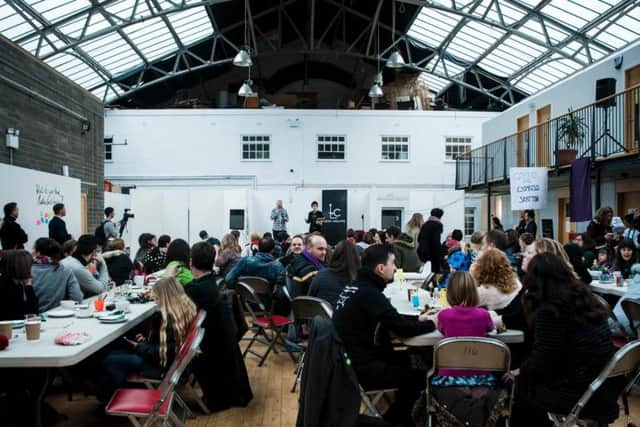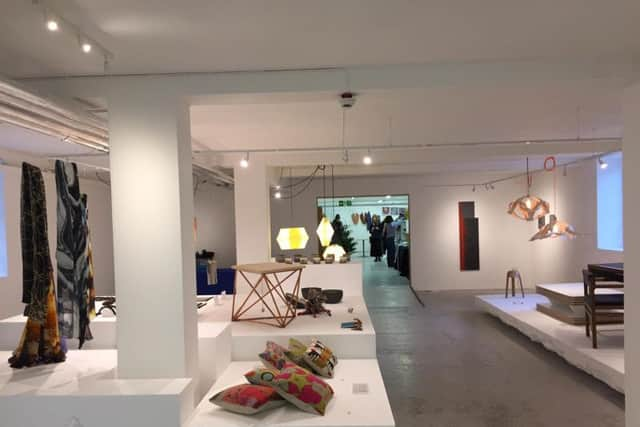Artists to lead creation of new 'vision for Leith'


The six-month project is expected to see cultural organisations, creative companies, architects and designers help shape a “future vision for Leith.”
It is hoped to secure culture provision in major new developments, breathe life into derelict buildings and empty shop units, and boost Leith’s economic and social development.
Advertisement
Hide AdAdvertisement
Hide AdOther targets include ensuring artists and cultural organisations are not forced out of the area by soaring property prices and persuading landowners not to sell sites to the highest bidder when they come onto the market.


The £45,000 project, which also backed by national arts agency Creative Scotland and the city council, is expected to build on the number of “creative hubs” in Leith. But it also aims to involve local communities around Leith to ensure there is a broad range of support for the blueprint.
Workshops, public meetings, walking tours and social media campaigns will be rolled out over the next few months, while a two-day summit will be held in the area during the Edinburgh Festival in August.
The project is being led by the Leith Creative network, two years after it carried out a “cultural mapping” exercise of Leith which found that the area was home to 1148 different artists, creative companies or cultural organisations.
The study also warned that artists based could be forced out of the city completely unless more affordable studio, rehearsal and performance space could be found.


It is hoped developers and property owners will be persuaded to guarantee space for the creative industries in major schemes to help them win the backing of community groups and the city council.
There has been significant progress since then with the reopening of two new creative hubs in a former biscuit factory on Anderson Place and Leith’s former Custom House being converted into new spaces for arts and culture.
Advertisement
Hide AdAdvertisement
Hide AdThe former Leith Theatre building, which has been lying empty since 1988, is expected to be reopened next month for the Hidden Door Festival.
The influx of artists into the port has also been cited as one of the main reasons for Leith being regularly cited as one of the UK’s hippest places.


News of the initiative has emerged in the wake of an old wave turbine plant being turned into a temporary studio for filming of the new Avengers blockbuster, the port being used for key scenes in Trainspotting sequel T2 and BBC drama series Clique, and the leading menswear designer Kestin Hare relocating from Stockbridge to Leith to open up in the Custom House complex.
Artist Duncan Bremner, co-director of Leith Creative, said: “This project isn’t about protectionism or nimbyism - it’s about trying to work together to make Leith a better place and also seeing if it might be possible to have a different form of public space.
“At the moment things are not being driven by planners - they are being driven by developers and the value of houses. But we have to involve developers in this process. It would be far too easy to end up in a ‘them and us’ situation.”
Morvern Cunningham, founder of the Leith Late festival, who was is also involved with Leith Creative, said the new project could help ease the "woes" of the city's music scene, which has been hit by a spate of recent venue closures.


She added: “It is really important as part of this whole process to have a big event to engage with the local community during the Fringe.”
Advertisement
Hide AdAdvertisement
Hide AdClive Gillman, director of creative industries at Creative Scotland, said: “The Leith Creative project is a great example of the ways in which communities are thinking about and planning their futures with the help of their artists and designers.
“We know that participation in cultural activity is fundamental to the well-being of individuals and communities, and projects like this can help us to be brave and positive about our future.
“Employing real collaboration and creative drive, this project recognises the important role of arts and creativity in achieving economic, social and cultural development.”
Richard Lewis, culture leader at the city council, said: “This project will give local citizens the opportunity, through engagement with creative communities, to have their say on how they want Leith to be in the future.”